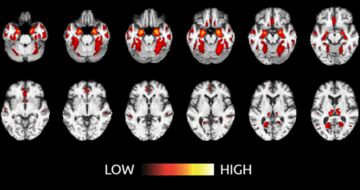

TRACE4OC™ provides the woman's level of risk of being affected by ovarian cancer from US imaging
Ovarian cancer is one of the most lethal cancers in women, with 300,000 cases diagnosed worldwide in 2018 and 180,000 deaths. The lack of diagnostic tools and the failure of accurate screening programs leads to often useless surgeries for benign masses and worsening of the patient’s prognosis for malignant masses.
An adequate and reproducible preoperative diagnosis is therefore of paramount importance.

TRACE4OC™ is our AI-based, CE-cleared medical device that uses machine learning to deeply analyze US images of adnexal ovarian masses of women at risks to provide the individual level of risk (very low risk or medium-high risk) of being affected by ovarian cancer.
The tool operates through a semi-automatic reading of the woman’s ovarian mass, obtained from a transvaginal US image frame, without contrast medium, in combination with CA-125 measure and the current woman’s menopausal state.
TRACE4OC™ identifies US-image features specifically associated to abnormal morphometric and echogenic pattern within and near an ovarian adnexal cancer mass caused by the ovarian cancer disease. Then, it analyzes these features through machine learning to automatically provide the woman’s risk and support specialists in gynecology in the diagnostic process.
Download electronic instructions for use
Please, fill the following form to obtain an electronic copy of the instructions of use, including manual, techincal sheet and acquisition protocols, if applicable. An electronic copy of the selected documentation will be sent to your email address.
Your email address and any additional information entered will only be used by DeepTrace to send the requested documentation and to update you about possible future changes in the documentation itself.
Clinical Evidences
ADNEXAL MASSES AND RISK OF MALIGNANCY BY RADIOMICS: THE FUTURE IS NOW
Chiappa, V., Interlenghi, M., Bascio, L. S., Salvatore, C., Fruscio, R., Ferrero, S., Rosati, F., De Meis, L., Rolla, M., Ficarelli, S., Pino, I., Franchi, D., Mor, E., Maggiore, U. L. R., Bogani, G., Raspagliesi, F., & Castiglioni, I. (2023). OC03.03: Adnexal masses and risk of malignancy by radiomics: The future is now. Ultrasound in Obstetrics & Gynecology, 62(S1), 7. https://doi.org/10.1002/uog.26338
Chiappa, V., Interlenghi, M., Bogani, G., Salvatore, C., Bertolina, F., Sarpietro, G., Signorelli, M., Castiglioni, I., & Raspagliesi, F. (2022). Radiomics and transvaginal ultrasound in adnexal masses: Is the next future of diagnostics here? International Journal of Gynecological Cancer, 32(Suppl 2), A70. https://doi.org/10.1136/ijgc-2022-ESGO.154 (publication pdf)
A DECISION SUPPORT SYSTEM BASED ON RADIOMICS AND MACHINE LEARNING TO PREDICT THE RISK OF MALIGNANCY OF OVARIAN MASSES FROM TRANSVAGINAL ULTRASONOGRAPHY AND SERUM CA-125
Chiappa, V., Interlenghi, M., Bogani, G., Salvatore, C., Bertolina, F., Sarpietro, G., Signorelli, M., Ronzulli, D., Castiglioni, I., & Raspagliesi, F. (2021). A decision support system based on radiomics and machine learning to predict the risk of malignancy of ovarian masses from transvaginal ultrasonography and serum CA-125. European Radiology Experimental, 5(1), 28. https://doi.org/10.1186/s41747-021-00226-0 (publication pdf)
THE ADOPTION OF RADIOMICS AND MACHINE LEARNING IMPROVES THE DIAGNOSTIC PROCESSES OF WOMEN WITH OVARIAN MASSES (THE AROMA PILOT STUDY)
Chiappa, V., Bogani, G., Interlenghi, M., Salvatore, C., Bertolina, F., Sarpietro, G., Signorelli, M., Castiglioni, I., & Raspagliesi, F. (2021). The adoption of radiomics and machine learning improves the diagnostic processes of women with ovarian masses (the AROMA pilot study). Journal of Ultrasound, 24(4), 429–437. https://doi.org/10.1007/s40477-020-00503-5 (publication pdf)













